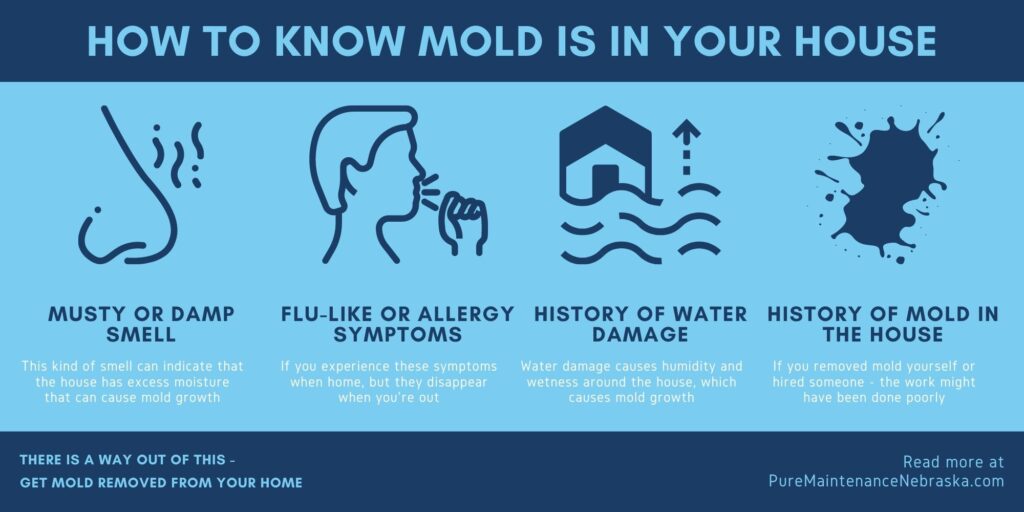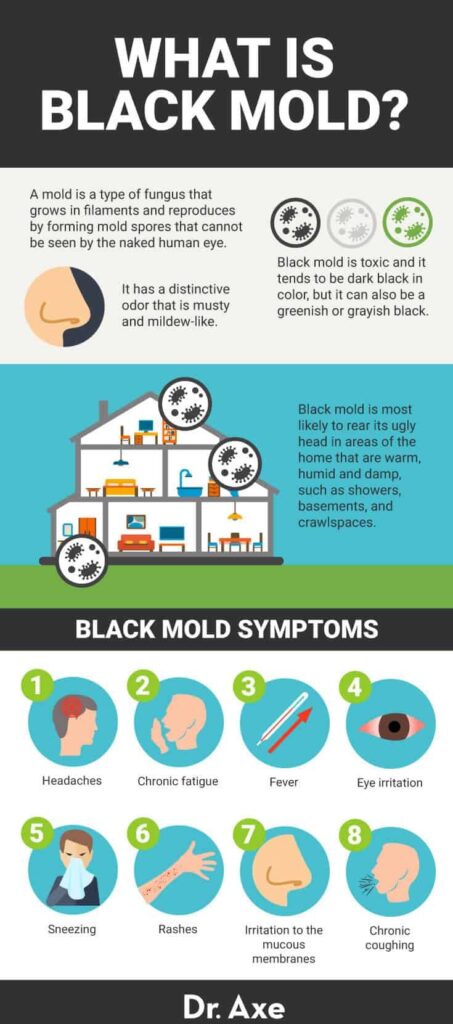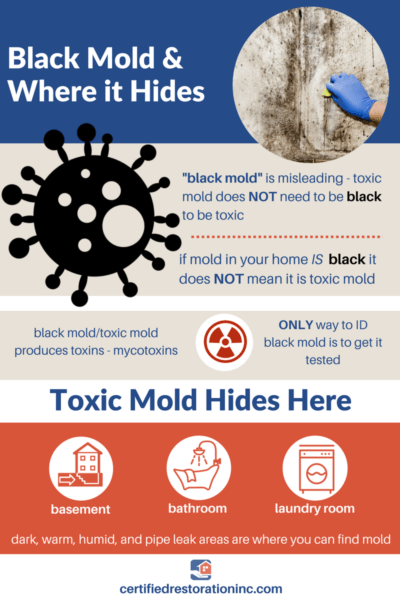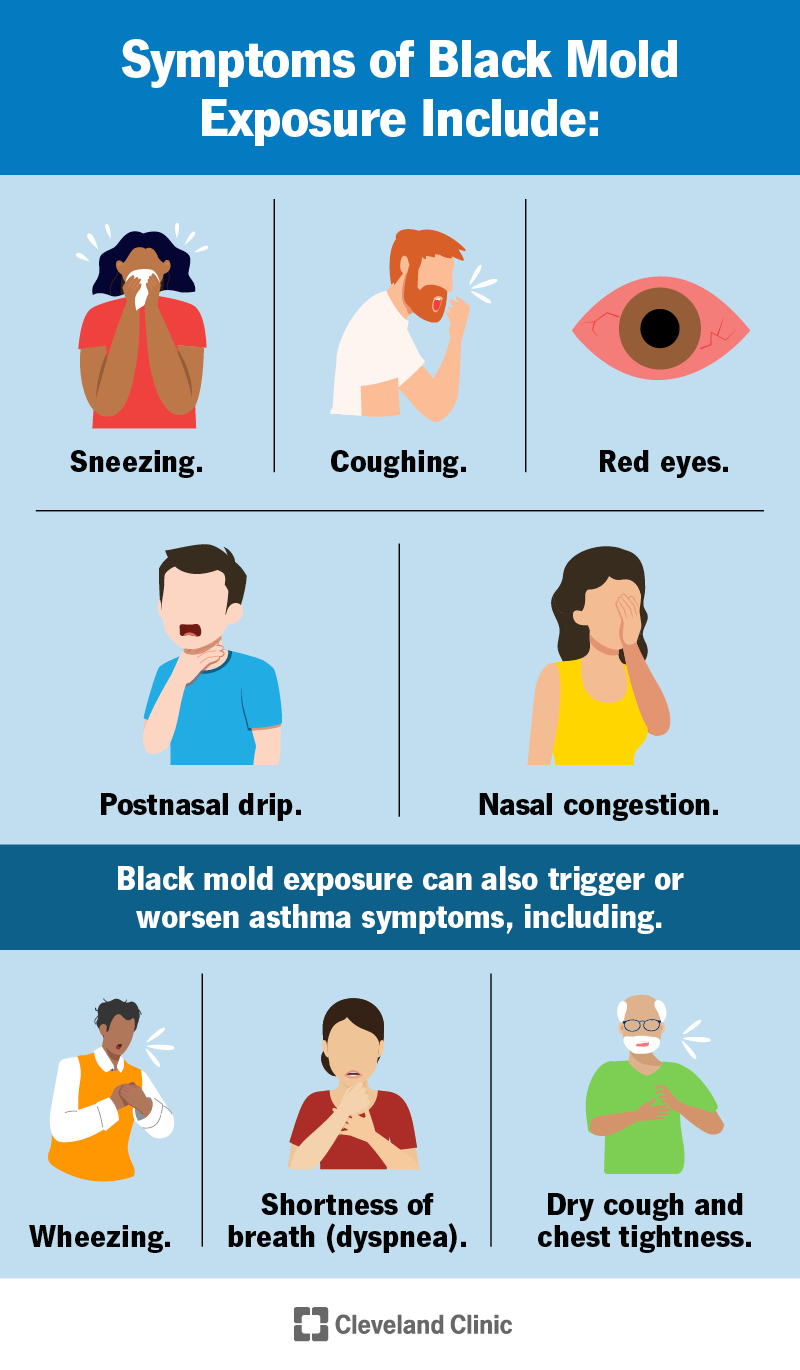In this article, we will be discussing the signs and symptoms of toxic mold exposure and how to identify potential health risks. You will learn about common indicators that may suggest mold presence in your environment and the potential health effects they can have on your body. By understanding these signs and symptoms, you will be better equipped to protect yourself and your loved ones from the harmful effects of toxic mold exposure.
Visible Physical Symptoms
If you suspect mold contamination in your environment, it is essential to be aware of the signs and symptoms of toxic mold exposure. Mold can have serious health effects, so recognizing these symptoms is crucial in identifying potential health risks. Here are some visible physical symptoms that may indicate exposure to toxic mold:
Moldy Odor in the Surroundings
One of the first signs you may notice is a strong musty or moldy smell in your home or workplace. If you can’t identify the source of the smell, it could indicate mold growth in hidden areas such as behind walls or under carpets.
Mold Growth on Walls and Ceilings
Visible mold growth on walls, ceilings, or other surfaces is a clear indication of a mold problem. Mold can appear in various colors, including black, green, brown, or white. If you see mold growth, it is important to take immediate action to prevent its spread and to remove it safely.
Water Stains and Discoloration
Water stains and discoloration on walls, ceilings, or carpets can be a sign of ongoing moisture issues, which can lead to mold growth. These stains may appear as dark spots or patches and should be investigated further.
Peeling Paint and Wallpaper
Mold can cause paint or wallpaper to bubble, crack, or peel. If you notice these signs, it could be an indication of mold growth underneath the surface.
Visible Mold Spores
In severe cases of mold contamination, you may be able to see mold spores in the air. These spores can appear like dust particles or small clusters and can be seen floating in the air or settling on surfaces.
Respiratory Issues
One of the most common health effects of toxic mold exposure is respiratory problems. Mold spores can irritate the respiratory system and cause various symptoms. If you experience any of the following respiratory issues, it may be due to mold exposure:
Persistent Coughing and Wheezing
If you develop a persistent cough or experience wheezing, it could be a sign of mold-related respiratory irritation. These symptoms may worsen when you are exposed to moldy environments.
Shortness of Breath
Difficulty breathing or shortness of breath can be a symptom of mold exposure, especially if it occurs in conjunction with other respiratory symptoms. If you find it hard to catch your breath or feel breathless, mold could be a contributing factor.
Chest Tightness
Some individuals exposed to toxic mold may experience chest tightness or discomfort. This sensation can be alarming and should not be ignored.
Sinus Congestion and Runny Nose
If you frequently experience nasal congestion or a runny nose without any identifiable cause, mold exposure could be to blame. Mold spores can irritate the sinuses and lead to persistent congestion and excessive mucus production.
Sore Throat
A persistent sore throat that does not seem to go away, despite the absence of other cold or flu symptoms, may be an indication of mold-related irritation. Mold spores can irritate the throat, causing inflammation and discomfort.
Allergic Reactions
For individuals with allergies, exposure to toxic mold can trigger allergic reactions. If you have a known allergy or sensitivity to mold, you may experience the following symptoms:
Sneezing and Itchy Nose
If you find yourself sneezing frequently or experiencing itchiness in your nose, mold exposure could be the culprit. These allergic reactions occur when your immune system reacts to the presence of mold spores.
Watery and Red Eyes
Itchy, watery, and red eyes are common symptoms of mold-related allergies. If you frequently experience these eye symptoms, especially in moldy environments, it is important to consider the possibility of mold exposure.
Itchy Skin and Hives
Exposure to toxic mold can also lead to skin irritation and allergic reactions. Itchy skin and the development of hives are common symptoms that may occur after exposure to mold spores.
Nasal and Sinus Congestion
Allergic reactions to mold can manifest as nasal and sinus congestion, leading to difficulty breathing through the nose and a sense of pressure in the sinus cavities.
Coughing and Wheezing
Individuals with mold allergies may also experience coughing and wheezing as a result of exposure to mold spores. These symptoms can be especially bothersome for individuals with pre-existing respiratory conditions such as asthma.
Neurological Symptoms
In addition to respiratory and allergic reactions, toxic mold exposure can also affect the neurological system. If you experience the following symptoms, it may indicate mold-related neurological effects:
Difficulty Concentrating and Memory Problems
Mold exposure has been linked to cognitive impairments, including difficulty concentrating and memory problems. If you find it challenging to focus or remember things, mold exposure may be a contributing factor.
Headaches and Migraines
Frequent headaches or migraines can be a symptom of mold-related neurological effects. These headaches may be more severe or persistent when you are in moldy environments.
Dizziness and Vertigo
Exposure to toxic mold can cause dizziness and feelings of vertigo. If you experience a spinning sensation or a loss of balance, mold exposure could be a possible cause.
Tingling Sensations and Numbness
Numbness or tingling sensations in the extremities or other parts of the body can be a sign of mold-related neurological effects. If you experience these sensations without any identifiable cause, it is important to consider the possibility of mold exposure.
Tremors and Muscle Twitching
In rare cases, toxic mold exposure may result in muscle tremors or involuntary muscle twitching. These neurological symptoms should be taken seriously and evaluated by a healthcare professional.

Skin Problems
Toxic mold exposure can also affect the skin, leading to various skin problems. If you notice any of the following symptoms, it may be due to mold exposure:
Rashes and Dermatitis
Exposure to mold can cause skin rashes and dermatitis. These rashes may appear red, itchy, and inflamed and can occur in the areas of the body that have directly come into contact with mold or mold spores.
Dry and Irritated Skin
Mold-related skin problems can also manifest as dryness and irritation. If you notice that your skin feels dry, flaky, or rough, mold exposure may be a contributing factor.
Itchy and Red Skin
Itchy and red patches of skin can occur as a result of a hypersensitivity reaction to mold spores. These symptoms may be localized to specific areas or spread across larger areas of the body.
Blisters and Sores
In some cases, toxic mold exposure can lead to the development of blisters or open sores on the skin. These skin lesions may be painful and can have a prolonged healing time.
Swelling and Inflammation
Mold-induced skin problems can also cause swelling and inflammation. If you notice swelling, redness, or increased warmth in the affected areas, it is important to seek medical attention.
Digestive Problems
Exposure to toxic mold can also have an impact on the digestive system, leading to various digestive problems. If you experience the following symptoms, mold exposure may be a potential cause:
Nausea and Vomiting
Mold exposure can trigger nausea and vomiting in some individuals. If you frequently feel nauseous or have episodes of vomiting without any apparent cause, mold exposure should be considered.
Diarrhea and Abdominal Pain
Digestive issues such as diarrhea and abdominal pain can occur as a result of mold-related gastrointestinal disturbances. If you experience these symptoms in conjunction with mold exposure, it is important to seek medical advice.
Loss of Appetite
Exposure to toxic mold can lead to a loss of appetite or changes in appetite patterns. If you notice a decreased interest in food or significant weight loss without any other explanation, mold exposure may be a contributing factor.
Weight Fluctuations
Changes in body weight, both gain and loss, can occur due to mold-related digestive problems. If you experience unexplained fluctuations in weight, it is important to consider mold exposure as a possible cause.
Food Sensitivities or Intolerances
Toxic mold exposure can also result in the development of food sensitivities or intolerances. If you notice that certain foods trigger digestive symptoms or worsen existing symptoms after mold exposure, it is important to seek medical advice.

Headaches and Fatigue
Headaches and fatigue are common symptoms of many health conditions, but they can also be signs of mold exposure. If you frequently experience the following symptoms, mold exposure may be a potential cause:
Frequent Headaches and Migraines
Mold-related headaches can be recurrent and may vary in intensity. These headaches may be accompanied by other symptoms such as nausea or sensitivity to light and sound.
Chronic Fatigue and Weakness
Feeling constantly tired, even after a good night’s sleep, can be a sign of mold exposure. Mold-related fatigue can be debilitating and make it difficult to perform daily activities.
Difficulty Sleeping
Mold exposure can disrupt sleep patterns, leading to difficulty falling asleep or staying asleep throughout the night. Insomnia or frequent awakenings may be related to mold-related health effects.
Brain Fog and Cognitive Impairment
Mold exposure can also cause brain fog and difficulty with cognitive functions such as memory, concentration, and problem-solving. If you frequently feel mentally foggy or experience cognitive impairments, mold exposure could be a contributing factor.
Irritability and Mood Swings
Mold-related headaches and fatigue can take a toll on your emotional well-being. Mood swings, irritability, and a low tolerance for stress may be a result of mold-related health effects.
Mood and Mental Health Changes
In addition to irritability and mood swings, mold exposure can also affect overall mental health and well-being. If you experience the following symptoms, it may be attributed to mold exposure:
Depression and Anxiety
Exposure to toxic mold can contribute to the development or worsening of depression and anxiety symptoms. If you notice a significant change in your mood or mental health after being exposed to mold, it is important to seek help from a healthcare professional.
Irritability and Anger
Mold-related health effects can also manifest as increased irritability and anger. These emotions may be excessive or disproportionate to the situation at hand.
Mood Swings and Emotional Instability
Frequent changes in mood or emotional instability can be signs of mold-related mental health changes. These mood swings may be unpredictable and disruptive to daily life.
Poor Concentration and Memory
Mold exposure can impair cognitive functions, making it difficult to concentrate or remember things. If you find it challenging to focus or remember details, mold exposure should be considered as a potential cause.
Confusion and Disorientation
Exposure to toxic mold can result in confusion and disorientation, making it difficult to think clearly or make decisions. If you frequently feel mentally foggy or have trouble processing information, mold exposure could be a contributing factor.

Sensitivities to Chemicals and Odors
One of the lesser-known symptoms of toxic mold exposure is an increased sensitivity to chemicals and odors. If you find that you react strongly to certain smells or chemicals, it could be a result of mold-related health effects.
Individuals exposed to toxic mold may experience heightened sensitivity to common household products such as cleaning agents, perfumes, or air fresheners. In some cases, even mild odors can trigger symptoms such as headaches, dizziness, or respiratory irritation.
Long-Term Health Effects
If left untreated or undetected, toxic mold exposure can have long-term health effects. Prolonged exposure to mold can lead to the following complications:
- Chronic respiratory conditions such as asthma or bronchitis
- Increased susceptibility to respiratory infections
- Neurological disorders such as multiple sclerosis or Parkinson’s disease
- Development of autoimmune diseases
- Damage to the liver, kidneys, or other organs
- Weakened immune system function
- Increased risk of cancer
It is crucial to address mold contamination promptly to minimize the risk of these long-term health effects. Seeking professional help for proper mold inspection, removal, and remediation is essential to ensure a safe and healthy living environment.

Conclusion
Recognizing the signs and symptoms of toxic mold exposure is crucial in identifying potential health risks. Whether it is visible physical symptoms, respiratory issues, allergic reactions, neurological symptoms, skin problems, digestive problems, headaches and fatigue, mood and mental health changes, sensitivities to chemicals and odors, or long-term health effects, being vigilant about mold exposure is essential for your well-being.
If you suspect mold contamination in your environment, it is important to take the necessary actions to mitigate the health hazards. Seek professional help for proper mold inspection, removal, and remediation to ensure a safe and healthy living environment. Don’t ignore the potential risks of toxic mold exposure; your health and well-being may depend on it.
